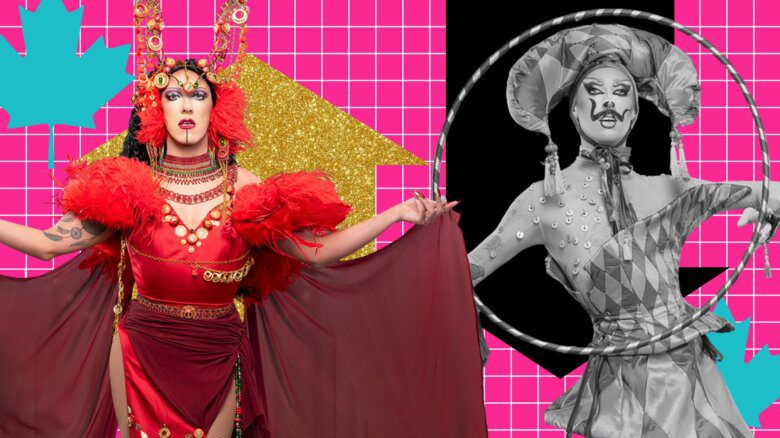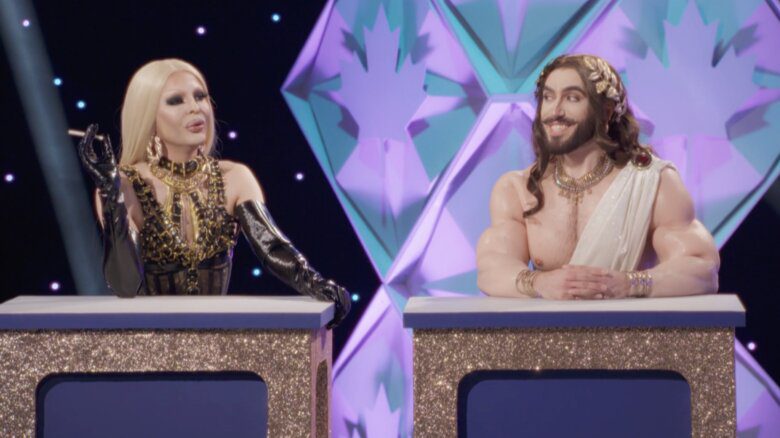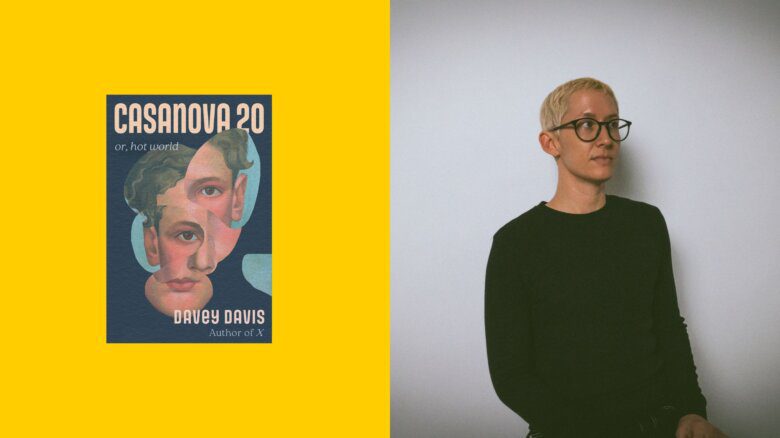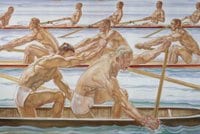
TIGHTY WHITIES. Albert Janesh's Water Sport (1936) anticipates the gay muscle mags of the American 1950s. Credit: (Courtesy of the Deutches Historisches Museum)
Looking for a serious escape from the frivolous fun and searing heat of an Ottawa summer? The cool, dark showrooms of the National Gallery beckon with the special exhibition The 1930s: The Making of “The New Man.” But beware, the chills run much deeper than air conditioning-induced goosebumps. This is a challenging look at the convergence of totalitarian politics, biology and art in one of the most turbulent periods of modern history.
The 1930s: The Making of “The New Man” brings together over 200 disparate works by artists from Europe and North America. The multimedia exhibition features painting, sculpture, photography and film, highlighting heavy hitters like Dalí, Picasso, Pollock, Rivera and Colville.
It explores the quest for racial perfection as it played out in the art and politics of pre-war Europe, particularly in Germany, Italy and the Soviet Union. The 1930s was marked by quests for biological and social perfection of the species with the development of “the new man” through, among other things, eugenics — selective breeding designed to nudge evolution along.
That push was paired with a quest to subsume humans into the faceless, collective masses of a totalitarian utopia. The exhibition looks how the tension between competing artistic currents of the time represented the rise and fall of this “new man,” set against the spectres of the Spanish Civil War and World War II.
Queer art lovers and politicos will find much to ponder. The 1920s and early 1930s saw significant advances in sexual freedom for the gay and lesbian community, particularly in Berlin. But the exhibition reminds us with devastating clarity how quickly the freedom enjoyed by minorities can be lost in times of political and economic turbulence.
The strength of the 1930s exhibition is in its exploration of the tensions within and among competing social and artistic movements as they responded to the science and politics of the day. The official classicism espoused by the totalitarian regimes is set in opposition to avant-garde works, which were labelled “degenerate” and marked for purging.
But the divisions are never clean. The most homoerotic works in the collection served as Nazi and Stalinist propaganda pieces of idealized male virility. Austrian painter Albert Janesh’s Water Sport, with its buff rowers in tighty whities, glorifies the male body and anticipates the development of 1950s gay muscle mags. Ditto the photos of sleek Soviet gymnasts. It’s disquieting for those of us obsessed with physical perfection to see something of ourselves in the art co-opted by homophobic totalitarian regimes. But it’s also an important reminder to step back and see who’s left out by the state’s official culture.
One of the archetypal metaphors of the exhibition comes from gay literary history: Oscar Wilde’s The Picture of Dorian Gray. On the outside, Dorian Gray is the ideal image of perpetual youth and vigour, but at his core, as his portrait reveals, there is only decay. In the exhibit as in The Picture of Dorian Gray, it’s the image of the decaying core that packs the greatest punch. Much of the so-called “degenerate” art is far more powerful than the stately classicist works.
And if the eerie echoes of “Seig Heil” that seep from the viewing room of Leni Riefenstahl’s The Triumph of the Will aren’t enough to send chills up your spine, the final section of the exhibition, appropriately entitled “The Charnel House,” certainly will. Canadian painter Alex Colville’s evokes the horror of the holocaust in his haunting Bodies in a Grave, Belsen. Meanwhile Salvador Dalí’s Soft Construction with Boiled Beans (Premonition of Civil War) is gut-wrenchingly prophetic of the devastation that awaited Spain.
The National Gallery has planned a series of lectures and films over the summer to complement the special exhibition. Albert Lewin’s 1945 film version of The Picture of Dorian Gray showed Jul 10 and James Whale’s 1931 classic Frankenstein is set for Jul 17, with films by Cocteau, Fellini and others still to come. It’s too bad these films were relegated to the status of special activities. Excerpts from Frankenstein within the exhibition would have brought the notion of Nazi-as-mad-scientist to life and better illustrated the importance of film in the period.
The successes and failures of The 1930s: The Making of “The New Man” lie in its ambition. The scope and variety challenge viewers to draw connections among history, science, politics and art. However, the common threads holding the exhibition together sometimes come undone in the muddle of its sheer sweep, making it difficult for the viewer to understand how it all fits together. But if you’re up for a challenge and willing to spend time reading the explanations and piecing together the broader picture, it’s well worth the visit to the National Gallery.
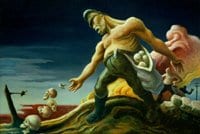
 Why you can trust Xtra
Why you can trust Xtra